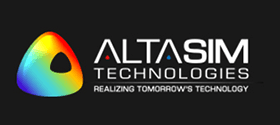Computational Analysis of Scattering of Electromagnetic Waves by Particles
Computational Analysis of Scattering of Electromagnetic Waves by Particles A computational model of Mie scattering was developed using COMSOL Multiphysics® and its RF Module. It solves for the scattering off a dielectric, magnetic or metal spherical particle with radius a. The model geometry is shown in Figure 1. The air domain is […]
Computational Analysis of Scattering of Electromagnetic Waves by Particles Read More »




